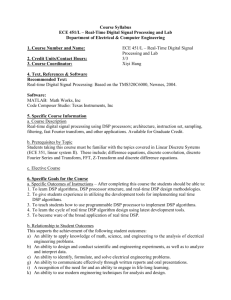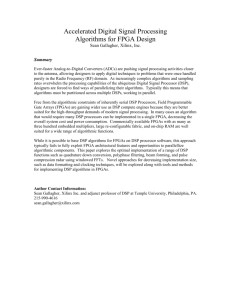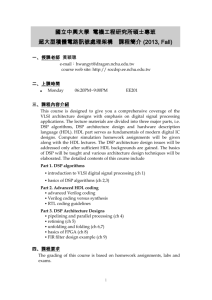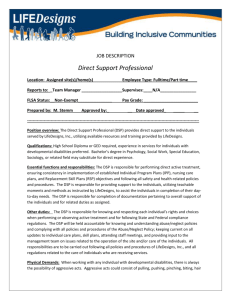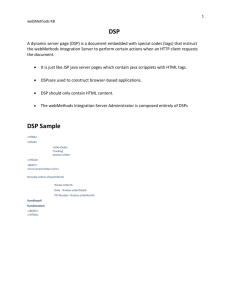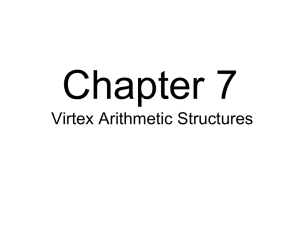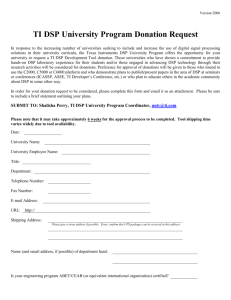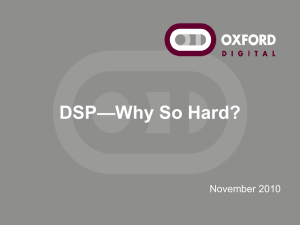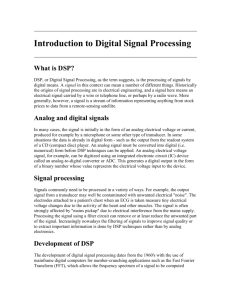Managerial Design Review Presentation
advertisement
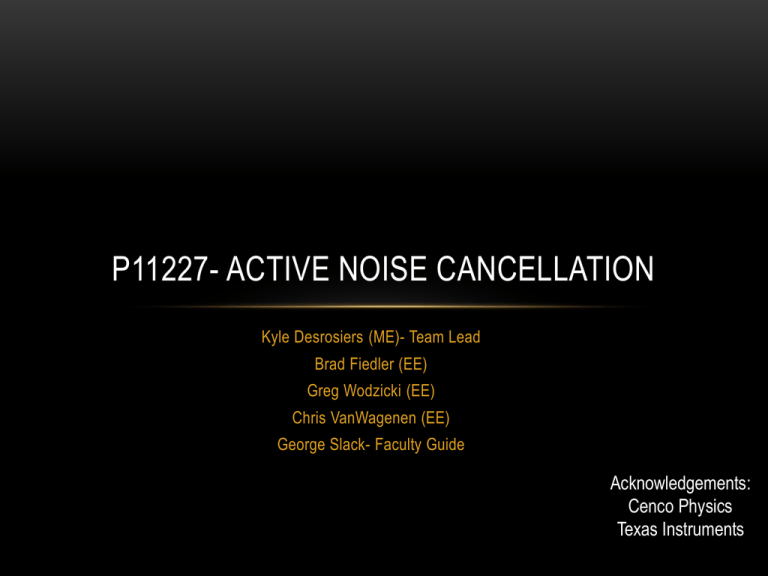
P11227- ACTIVE NOISE CANCELLATION Kyle Desrosiers (ME)- Team Lead Brad Fiedler (EE) Greg Wodzicki (EE) Chris VanWagenen (EE) George Slack- Faculty Guide Acknowledgements: Cenco Physics Texas Instruments PROJECT DESCRIPTION • This project aims to attenuate sound level output of a given source using an Active Noise Cancellation system (ANC). • First of a series of projects ultimately targeting attenuation of Internal Combustion Engine. KEY CUSTOMER NEEDS • Prove concept of sound attenuation via Active Cancellation • Demonstrate technical challenges limitations of ANC • ANC system fully functional to work on a given input KEY ENGINEERING SPECS • Noise reduction- Source only vs ANC system on • Target: >6dB • Ideal conditions: ~17dB • Effective Frequency range • Ideal: 20-20k Hz (Human Auditory Range) • Actual: 20-1000 Hz • Processing time • Ideal: 0.5 ms • Actual: Unknown • Speaker Output Level • ~100dB CONCEPT SUMMARY • Sound Waves: • Propagation of compression and rarefaction through air Source: http://misclab.umeoce.maine.edu/boss/classes/SMS_491_2003/sound/sound_wave.jpg SUPER POSITIONING OF WAVES • In Phase • Out of Phase SYSTEM ARCHITECTURE • Microphones: Input Signal, Error Signal • Power Amplifier: Behringer EPQ1200 • Speaker: Goldwood GW-210/8 • DSP: • TAS3108EVM2 Eval Kit • C5505 DSP Eval Kit DESIGN SUMMARY • System Spec’d for Lawn Mower Engine • Wye Configuration, Dipole Configuration • Speakers: • 10in, 110 Watt RMS • 86.5 dB Sound Level output • 40-2200 Hz • Amp • 2 x 320 Watts at 8 Ohms DESIGN SUMMARY • Microphone • Typical Frequency Response • Cheap • For Initial Testing • DSP • TAS3108EVM2 Eval Kit • C5505 DSP Eval Kit DSP • TAS3108EVM2 Eval Kit • Sampling Rate: 192 kHz • Programmable in Assembly or GUI Interface • 8 Inputs/outputs • C5505 DSP Eval Kit • Sampling Rate: 48 kHz • Programmable in C++ • TI Support • 2 Inputs/Outputs ALGORITHM • Least Mean Squares (LMS) • 𝑤 𝑛 + 1 = 𝑤 𝑛 + 𝜇𝑥 ′ 𝑛 𝑒(𝑛) • Modeled in Matlab • Shown to Work • Unable to successfully implement in first DSP • Feedback issues using second DSP stalled implementation TESTING/RESULTS • Matlab Simulation TESTING/RESULTS • Test Setups Conducted • Straight Inverted Signal, Equal Path Length • Wye • Dipole Box TESTING/RESULTS • 4in Pipe, Wye TESTING/RESULTS • 4in Pipe, Dipole • Lawn Mower Sound Wave • 8dB Reduction TESTING/RESULTS • 6in, Wye Connection • Complex Sounds • Dependent on sound • Achieved 8dB reduction TESTING/RESULTS • Using Microphones and DSP • Max Reduction achieved: 3dB • Feedback through mics limited test range • Testing conducted at low sound levels SUCCESSES AND FAILURES • Successes • Proof of concept • Geometry, superposition • Pure tones • Cancellation of low frequencies with inversion SUCCESSES AND FAILURES • Failures • Programming original DSP • Programming second DSP, fine tuning • Microphone Feedback, Clipping • Unable to implement on non electrical sound source FUTURE WORK • Testing • 6 inch dipole setup • Back pressure with system in use • Algorithm debugged • New microphones • Eliminate feedback/clipping issue • System downsized, optimized • Application to mechanical sound source SUGGESTIONS • Computer engineer • Better knowledge of programming • Increased budget • Microphones with proper range, sensitivity, heat properties • More expert advice/input

